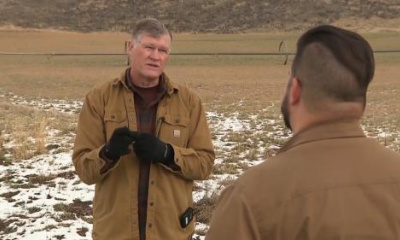SALT LAKE CITY — To help manage salinity levels on the Great Salt Lake, the state of Utah is exploring changes to the causeway berm.
Utah's Division of Forestry, Fire & State Lands will commission a study to examine if there is a better way than just bringing out heavy equipment to pick up and drop boulders in the water, raising and lowering the berm. The berm, on the Union Pacific causeway that divides the north and south arms of the lake, has become a critical part of managing the lake's salinity and its ecosystem.
"Since the point in 2022 when we hit that threshold that was pretty scary, it had some negative impacts on the ecosystem and was kind of getting to the point where we really needed to take action, the berm has been the tool that has allowed us to get to that point. It's been good," Ben Stireman, the deputy director of the Utah Division of Forestry, Fire & State Lands, told FOX 13 News on Wednesday.
The difference is visible. The north arm — which is saltier — is pink and has become famous in its own right. The south arm is where rivers drain into it and people, wildlife and industry relies on the Great Salt Lake and a healthier ecosystem. The lake itself dropped to a historic low in 2022 as a result of water diversions, drought and a changing climate. A shrinking lake presents an ecological threat to Utah with reduced snowpack, toxic dust and impacts to public health, wildlife and the economy. In response to the crisis, the berm was utilized to help balance the salinity and prevent total ecological collapse.
This year, the Utah State Legislature authorized $500,000 for a study on the berm.
"A new engineered solution would allow us to better manage those flows, we could better measure those flows, we can better forecast and predict and try to decide what would be the best way to manage the salt loading to the north arm and the flows to the north arm," Stireman said.
But Stireman added it is entirely possible that nothing is done.
Meeting with reporters on Wednesday, the Great Salt Lake Commissioner's Office said the berm study could be helpful. The commissioner's office is responsible for enacting rescue plans for the lake.
"What are the options? What are different ideas to replace the berm or more adaptively be able to manage salt and water between the two arms," said Tim Davis, the deputy Great Salt Lake Commissioner.
The study is expected to be completed later this year. Should the state proceed with any berm redesign, any funding for it would need to be authorized by the legislature in its 2025 session that begins in January.







